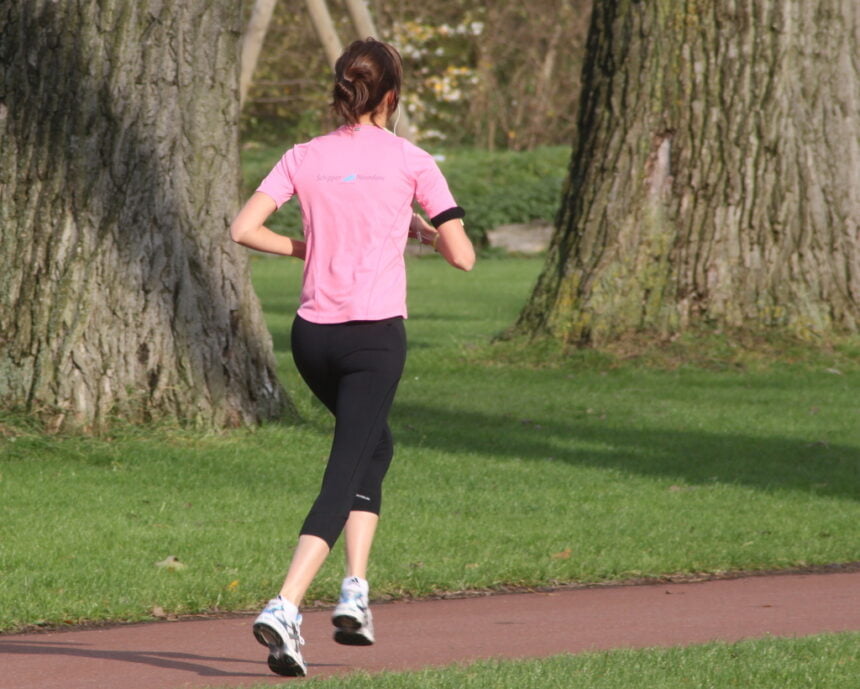We previously talked about some of the reasons people might have chronic foot pain. You have to recognize the importance of identifying these issues and react accordingly. One of the biggest causes of foot pain is having flat feet.
Flat feet are probably a lot more common than you think. Around 30% of the population suffers from this condition and 10% have noticeable symptoms. You have to understand the problems and potential causes.
Having flat feet means that your feet don’t have the normal arch that they should when you stand. This can result in pain if you engage in strenuous physical activity. Pes planus, or “fallen arches,” is the medical term for the condition. Typical in children, it often goes away between the ages of 2 and 3 when the ligaments and tendons in the foot and leg strengthening. Flat feet in children are rarely problematic, but they can persist into adulthood.
The most common subtype of this condition is a flexible flat foot, which means that when you lift your feet off the ground, the arches of your feet are visible, but when you put your feet back down, the arches sink, and the soles make complete contact. This subtype doesn’t hurt in most cases, and it starts in childhood.
Tight Achilles tendon is another subtype. The Achilles tendon joins the heel bone to the calf muscle. You may have pain when walking or jogging if it is excessively tight because it causes the heel to lift prematurely.
Another subtype is called posterior tibial tendon dysfunction (PTTD). You can get this subtype as an adult if the tendon that joins your calf muscle to the inside of your ankle gets damaged.
Without adequate arch support, you will experience ankle and pain on the inside of your feet. Depending on the underlying cause, you may experience symptoms in one or both of your feet.
What Causes Flat Feet?
This condition relates to the bones and tissues of your feet and lower legs. Since it takes time for tendons to tighten and develop an arch, flat feet are standard in children under the age of 3. However, in rare instances, the bones in a child’s feet fuse, painful.
This tightening process must be completed to prevent flat feet from developing. It’s also possible to get flat feet later on if the tendons in one or both feet get damaged. Flat feet are linked to other medical conditions like muscular dystrophy and cerebral palsy.
The likelihood of developing flat feet increases if the condition runs in your family. Because of the potential for foot and ankle injuries, you’re at a higher risk if you’re a very athletic and physically active person.
Older adults who are more likely to fall or get hurt are also at higher risk, as are people with medical conditions that affect the muscles. Obesity, hypertension, and diabetes mellitus are further risk factors.
When Should You See a Healthcare Provider?
As long as your flat feet are not causing you any pain or discomfort, there’s nothing to worry about. On the other hand, flat feet may be to blame if your feet hurt after you walk or stand for a long time. You can also experience discomfort or pain in your lower legs and ankles. In addition, your toes may be tight or numb, have calluses, and lean toward one another.
If that’s the case, it’s better to consult a podiatrist at a specialized practice like Manly Cove Podiatry Northern Beaches. You can also consult an orthopedist or speak to your primary care physician. A few tests are required to determine the source of the problem. Your doctor will ask you to stand on your toes to determine if you have arches in your feet. If you have an arch, it’s possible that your foot pain isn’t related to flat feet.
They’ll also check for ankle flexion. If you have trouble flexing your foot or don’t have an arch, they may request additional tests, such as a foot X-ray or a scan to evaluate the bones and tendons.
Providing support for your feet is usually the first step in addressing the condition so that they will recommend orthotics. Orthotics are shoe inserts that give arch support. For kids, they might opt for heel cups or special shoes until the arch in their feet is appropriately formed.
Possible Complications for Runners with Flat Feet
Running is a strenuous physical activity that demands a lot from your leg muscles and flexibility and agility in your feet and ankles. Before we can get to the tips we promised in the title of this article, we need to discuss the biomechanics involved.
Your arches are designed to function as a natural shock absorber. Therefore, at impact, they should bend and roll slightly to distribute your weight across a broader area and for a longer length of time, resulting in less strain on your joints, muscles, and bones.
Having flat feet can reduce the efficiency of this mechanism. You’re not getting as much shock absorption, particularly if your flat feet are relatively inflexible. This means that the impact forces cannot be dissipated correctly, causing additional stress to be passed to the bones and muscles of the feet and legs.
Runners with flat feet are also more prone to overpronation, which means that when you’re running and putting weight on your feet, they roll inward more than they should. When someone overpronates, there is no straight line between the ankle, heel, and front of the foot, and there may be a buckling of the ankle and a deviation outward of the front of the foot. To make up for the misalignment, the feet and legs must over-rotate, which increases strain and risk of injury.
Another possible problem is that you might develop Plantar Fasciitis. You have to look out for this problem as well.
Get the Right Running Shoes
Because feet and gait patterns come in diverse shapes and sizes, each pair of feet has its own set of support, cushioning, and stability requirements. The key is to pick running shoes that meet your needs. This does not imply that you should spend a fortune, but that you should choose the style that works for you.
Stability shoes are best for mild to moderate overpronation, whereas motion control shoes are best for severe overpronators.
Stores specializing in selling running shoes usually have trained staff who can advise you on different styles.
Get Orthotics
Custom orthotics are another option to correct structural issues and lower strain and risk of injury. As we already mentioned, orthotics are special inserts you put in your shoes and offer more support than regular insoles. You’ll get the precise amount of support and stability you need.
Custom orthotics are manufactured using an impression of your feet, and they can be adjusted to fit perfectly. Moreover, if you get custom orthotics, you can get regular running shoes.
Don’t Ignore Pain
Having flat feet makes you more prone to injuries, so you need to make sure you’re training properly. Research the fundamentals of running and get advice from a medical professional and trainer. You’ll also need to learn how to warm up and stretch properly, and it’s important to train regularly. If you keep stopping and starting again, you increase your risk of injury.
However, if you get injured, you’ll want to make sure you rest well and et back into your routine gradually if your pain or discomfort persists, medical attention from a specialized provider.
Remember that all runners need to be careful when training, not just people with flat feet.






